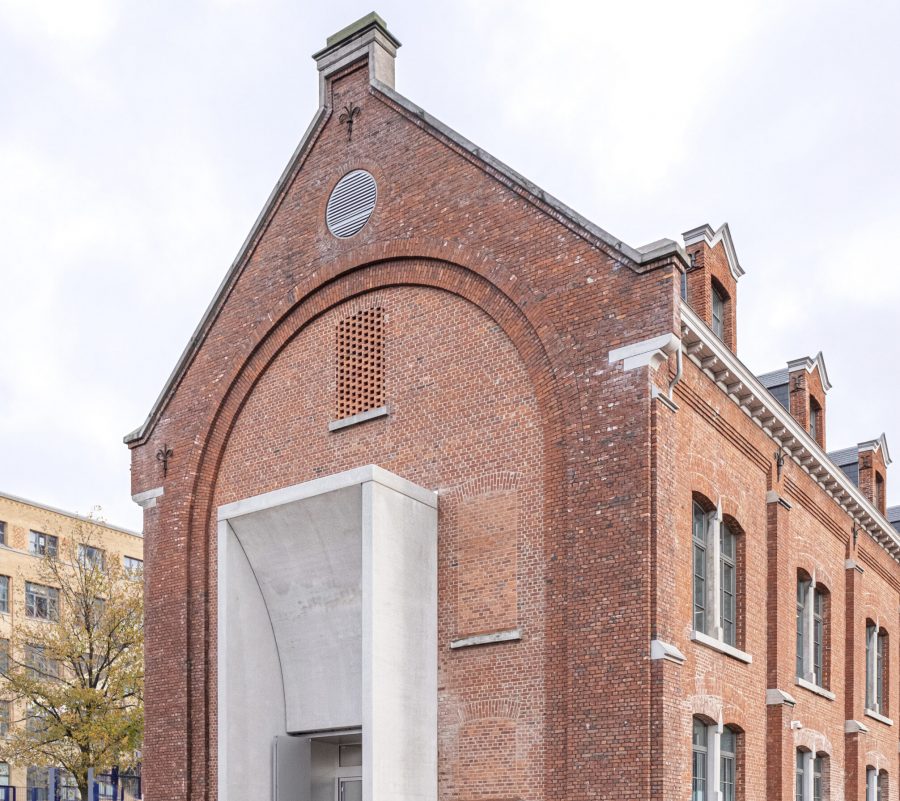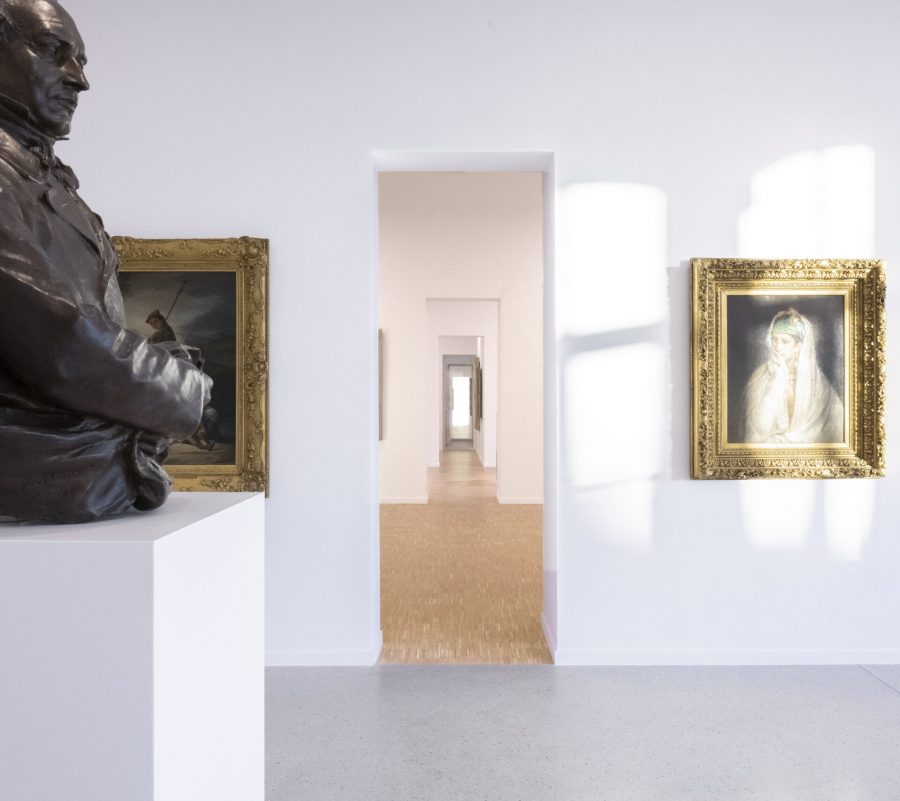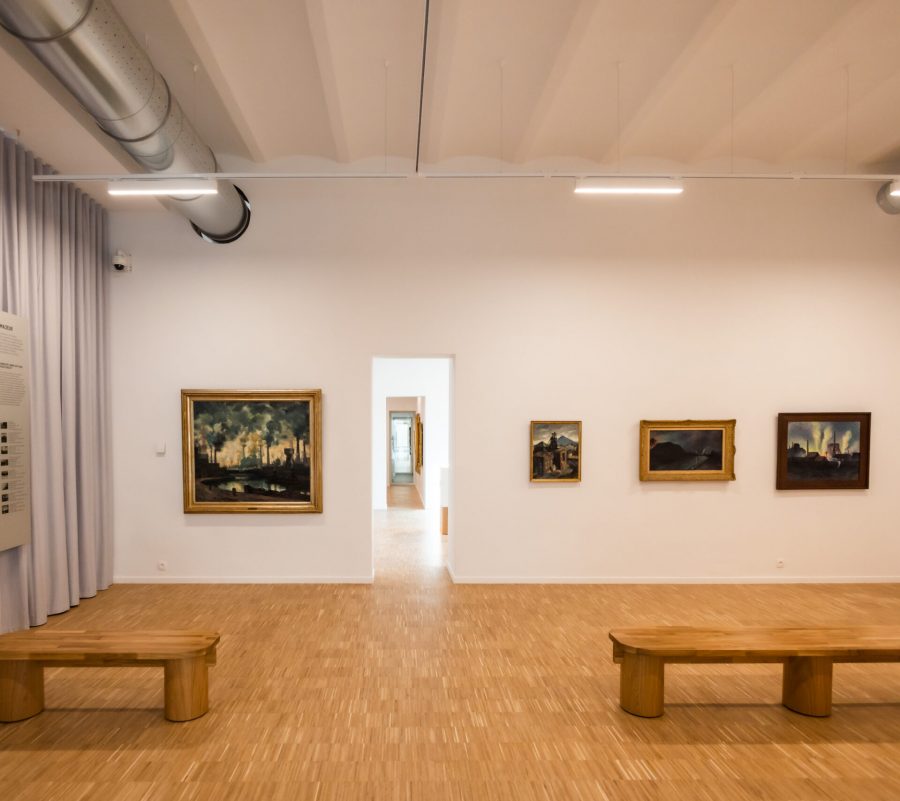Museum of fines arts





The history of the Musée des Beaux-Arts de Charleroi is above all the history of a public collection. Jules Destrée (1863-1936) was the driving force behind the desire to create an art collection for the City of Charleroi.
Charleroi, founded in 1666 by Charles II, King of Spain, was originally a military stronghold. This modest town benefited from the presence of the river Sambre, which provided a favourable communication route for its development. It became a major centre of European industry thanks to coal mining, metallurgy and glassmaking. However, the town’s cultural development was slower. It was not until 1780, with the founding of a drawing school by Pierre-Balthazar de Blocq, that artistic activity really got underway. François-Joseph Navez, a major figure in Belgian painting, was one of its first students.
The 20th century saw an acceleration in this cultural dynamism, with the creation of the Académie des Beaux-Arts in 1946, the Palais des Expositions in 1954 and the Palais des Beaux-Arts in 1956. The art fairs, organised in 1911 by Jules Destrée as part of the Charleroi International Exhibition, also played a key role in highlighting local artists such as Navez and Paulus.
It was at this point that the idea of creating a museum took shape. Destrée wanted to provide an exhibition space for the collection launched in 1889 by the Navez Committee, which had donated to the town a bust of the painter by the sculptor Jean Hérain, which is still part of the collections.
The museum will occupy the second floor of Charleroi’s new Town Hall, a late Art Deco building designed by architects Jules Cézar and Joseph André and inaugurated in October 1936. At the time, its collections comprised fifty works, accessible by appointment.
In the 1980s, it opened its doors to the public on a permanent basis, and also hosted temporary exhibitions. The collections were expanded through purchases, donations and deposits, and were enriched by works previously held in the former municipalities of Greater Charleroi and the former Musée Destrée.
In 2007, as the exhibition premises no longer met safety standards, the works were given a new home in the Palais des Beaux-Arts until 2019.
The Musée des Beaux-Arts de Charleroi reopened its doors on 17 December 2022 in a completely redesigned setting: the former Defeld stables. This historic building, dating from 1887, has been carefully refurbished over a surface area of 2080 m² spread over three levels, providing a new showcase for the local authority’s collections and giving them legitimate visibility. The first floor is dedicated to the permanent collections, while the ground floor hosts temporary exhibitions. Located at the heart of a modernised site, enriched by a sixty-metre signal tower designed by Jean Nouvel, the museum reflects the dynamic urban and architectural transformation of the city of Charleroi.
The Musée des Beaux-Arts de Charleroi stands out for its desire to be open, lively and accessible to all. Since its origins, the museum has aspired to pass on knowledge and educational values, an objective that remains at the heart of its project. It promotes collective memory and is aimed primarily at a local audience, while at the same time taking a universal approach.
Its public collection, deeply rooted in regional history, addresses social, political and cultural issues that are relevant to today’s world. With this in mind, the museum also acts as a showcase for artists. Women artists, who have long been invisible, now have a rightful place on the walls of the permanent collections and in temporary projects.
The museum acts as a permanent cultural forum, emphasising inclusion and accessibility, regardless of visitors’ age, origin or social background.
Visitors are at the heart of the museum project. Everyone, whatever their age or background, is invited to engage with the works of art, through innovative mediation tools, contemplative spaces and interactive devices. Places like the Agora provide a place to stop, reflect or simply relax, reinforcing the idea of a living, welcoming museum.
By blending past, present and future, the Musée des Beaux-Arts de Charleroi is asserting its role as a major cultural player, both anchored in its time and focused on the realities of the world.
